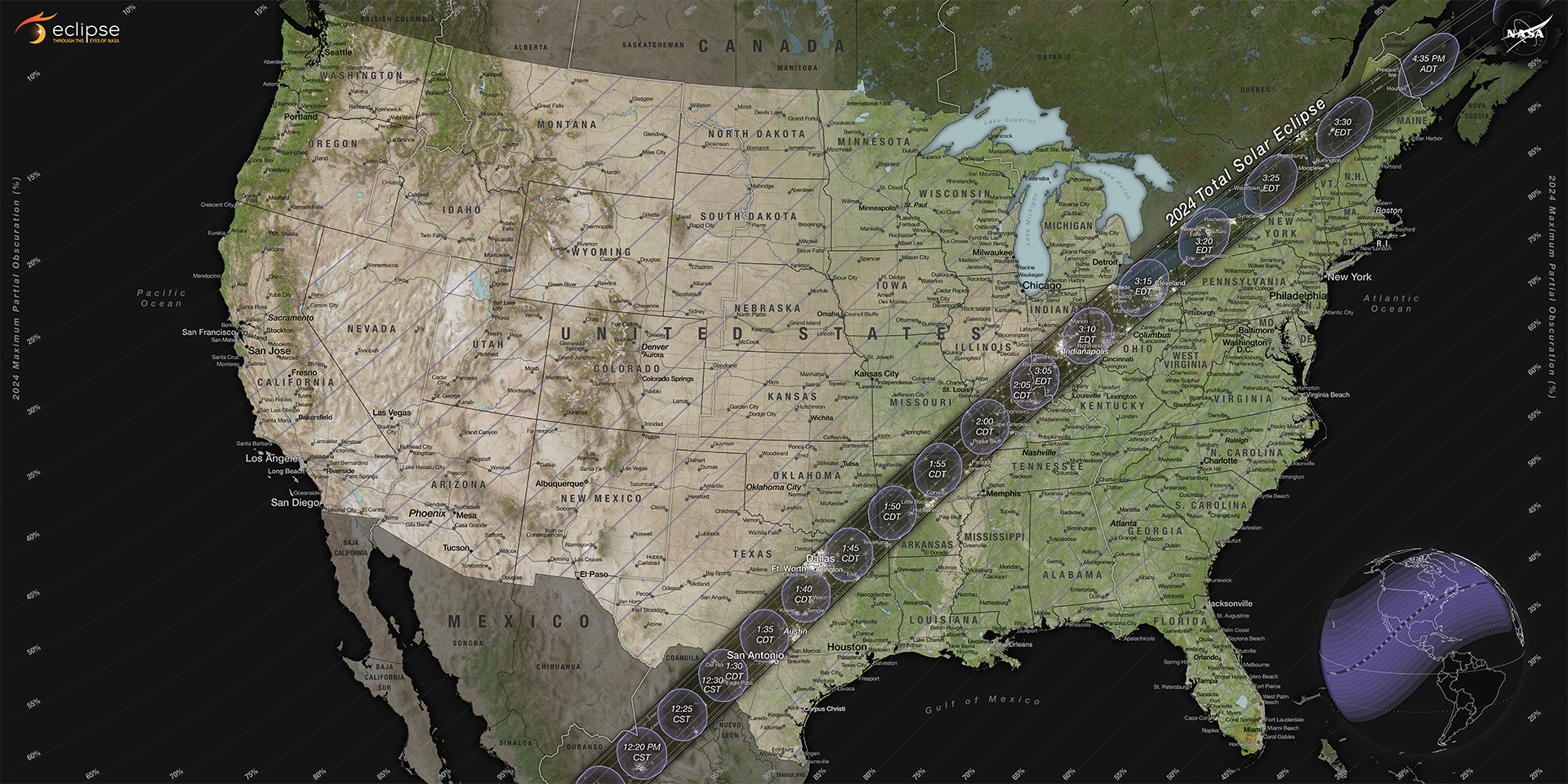 The annular eclipse last October, which was centered on Albuquerque, occurred when the moon passed between the Earth and the sun but, due to its apparent size and location in its orbit, didn’t completely obscure it. Consequently, the sun appeared as a bright ring surrounding the dark orb of the moon when viewed using appropriate eye protection. On April 8, the moon will be in a different orbital position so that it will completely cover the sun’s surface from a path stretching from Mexico to Canada.
The annular eclipse last October, which was centered on Albuquerque, occurred when the moon passed between the Earth and the sun but, due to its apparent size and location in its orbit, didn’t completely obscure it. Consequently, the sun appeared as a bright ring surrounding the dark orb of the moon when viewed using appropriate eye protection. On April 8, the moon will be in a different orbital position so that it will completely cover the sun’s surface from a path stretching from Mexico to Canada.
This eclipse will be partial across New Mexico, with 65-90% of the sun blocked from view, depending on location. Approximately 70% of the sun will be obscured from Albuquerque, with the eclipse beginning a little after 11:15 a.m., reaching its maximum coverage at 12:30 p.m., and ending a few minutes after 1:45 p.m.
Because the sun is not fully obscured from New Mexico, there is no point during this eclipse where it is safe to look directly at the sun without proper eye protection. The total part of the eclipse can be seen safely with the unaided eye only along the path of totality. See where the path is and find out when the eclipse is happening from any location here: https://science.nasa.gov/eclipses/future-eclipses/eclipse-2024/where-when
On Monday, April 8, from 10 a.m. to 2 p.m., bring your solar glasses from the October eclipse back to the museum for opportunities to watch the sun hide again! Viewing monitors will broadcast live coverage of the eclipse from along the path of totality, offering a unique viewpoint of the phenomenon as it unfolds. Other events that day include planetarium presentations about the eclipse (free with museum admission), hands-on family-friendly activities inside the museum, and safe viewing of the partial eclipse in the Museum Observatory and through other telescopes.
The regularly scheduled public planetarium shows at 11 a.m. and 12 p.m. will be canceled on this day only.



